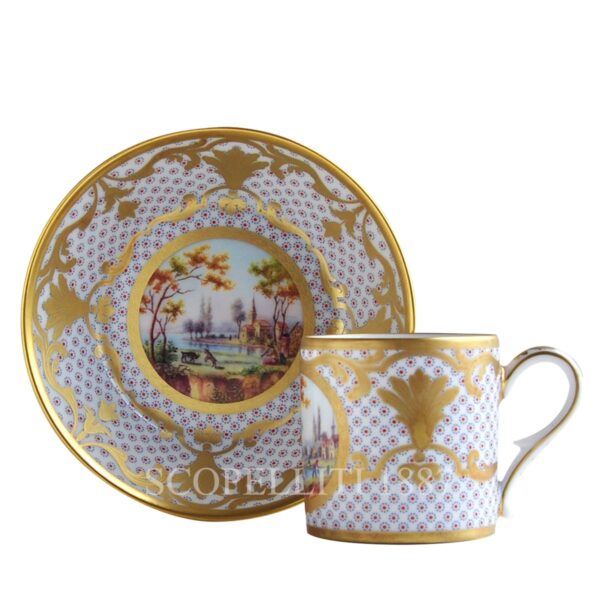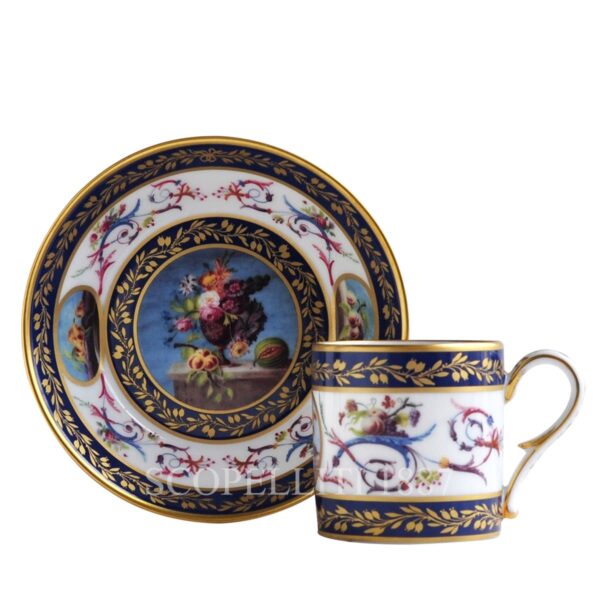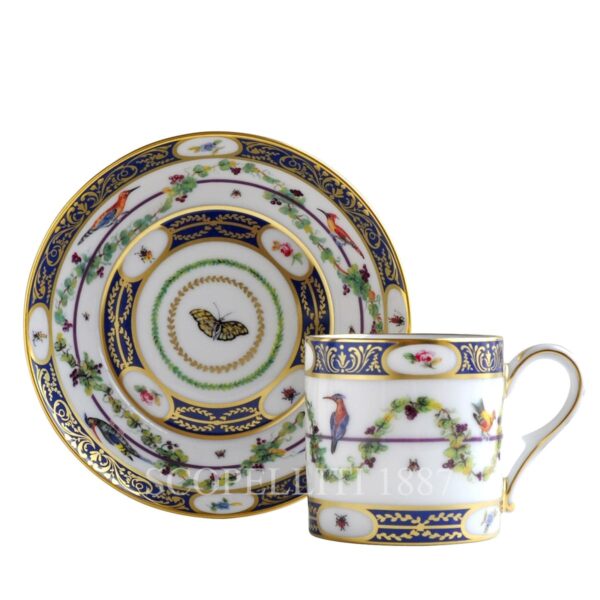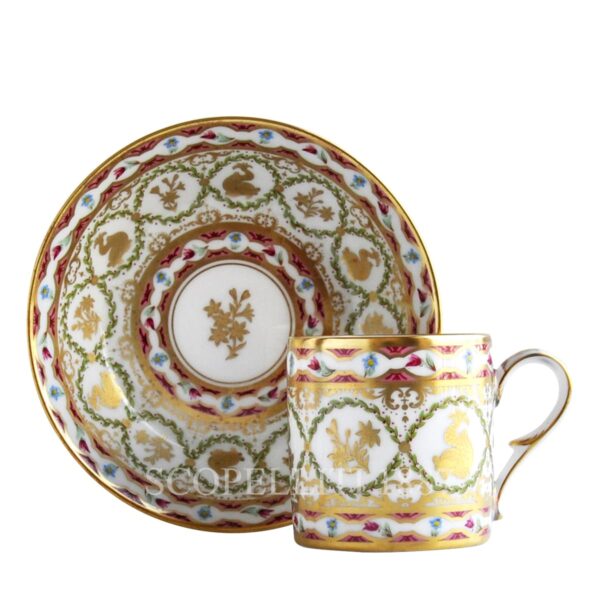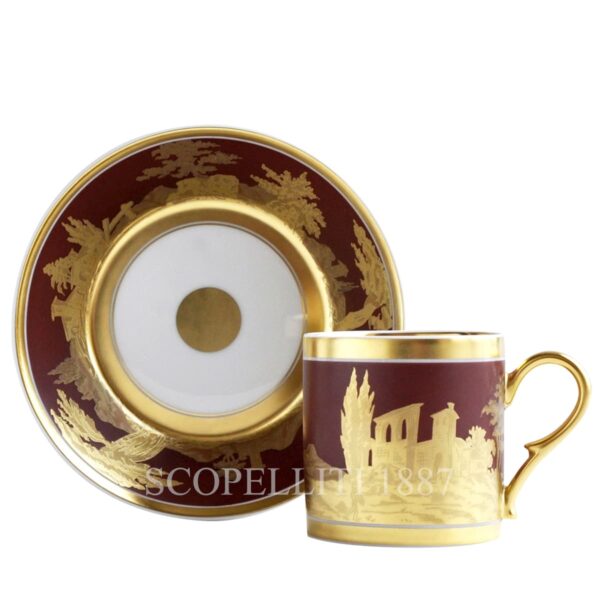The Litron Cup: Also known as the “square cup”, it derives its name from the Latin word “libra”, which expressed a unit of liquid measurement. Its precise size is not consistent, however, as four variations with different measurements exist. The shape of the saucer, which always accompanied the cup, is noteworthy for its raised sides and deep well. read more...
Litron Cup Paysages a la Barque A.M.Royale
The litron cup Paysages a la Barque was presented in 1778. Original is housed in the Louvre Museum in Paris.
The painter Pierre-Joseph Rosset, who created this cup in the Sèvres workshops, returns to a style that was fashionable at Versailles. A talented floral painter before he began pursuing landscapes, he worked in the Sèvres workshops for forty years. The base of the cup is characterized by a “partridge eye” design, thus marking the era and underlining the unique cachet of this cup. The original belonged to Mrs. Adolphe Thiers, who bequeathed it to the Louvre Museum in 1880.
453,00€
Availability: Only 1 left in stock (can be backordered)
Shipping time: Same day shipping

Ask Danka for free multilingual assistance

Shipping to the EU*
We gladly offer FREE SHIPPING for every order valued over € 500,00.
€ 35,00 shipping charges for orders that amount to less than € 500,00.
€ 50,00 extra shipping charges for bulky items.
Shipping to the United States
We gladly offer FREE SHIPPING for every order valued over € 500,00.
€ 65,00 shipping charges for orders that amount to less than € 500,00.
€ 50,00 reduced shipping costs for small articles, for example jewels.
€ 100,00 extra shipping charges for bulky items.
Rest of the world
We gladly offer FREE SHIPPING for every order valued over € 500,00.
€ 100,00 shipping charges for orders that amount to less than € 500,00.
€ 80,00 reduced shipping costs for small articles, for example jewels.
€ 250,00 extra shipping charges for bulky items.
*including UK, Iceland, Switzerland and Norway
You can change your mind within 14 days form receiving your order and safely return the product back to SCOPELLITI 1887 for a full refund. This applies to all products from all brands, excluding customized items. read more...
Customer Service You Can Speak To
Whenever you feel talking to a person could help, our customer service will be happy to help to support you
- 100% original – All products sold by SCOPELLITI 1887 are original and conform to specifications.
- All Gifts are packaged in its original signature Box and tied with elegant Ribbon
- 100% Satisfied or Refunded


